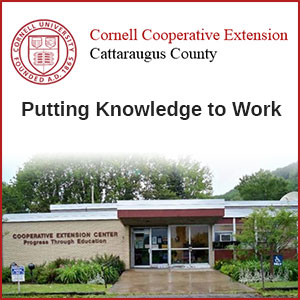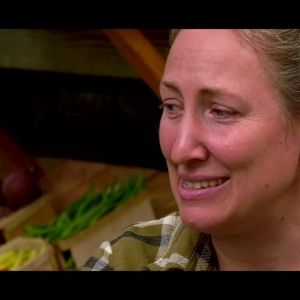Other Ag News: CBO’s Farm Bill Baseline, Explained
In Washington, DC, the political party that governs the House, Senate, and White House is rightly portrayed as a major contributor to policy outcomes. But politics alone is far from the only determinant. Oftentimes, it’s the cost – or projected cost – of a program, policy, or bill that can be just as influential. For that reason, the closest observers of federal agriculture policy annually look forward to an unheralded press release from the Congressional Budget Office (CBO).
Once or twice a year, the CBO releases a Budget and Economic Outlook, which includes updated economic projections of the U.S. Department of Agriculture’s (USDA) mandatory farm and nutrition assistance programs. These economic projections – commonly referred to as “baseline projections” or simply “baseline” – rarely grab headlines, but are nevertheless major determinants of federal agriculture policy, and in particular the farm bill.
The cost of federal legislation such as the farm bill is calculated on a ten-year basis, even if the authority for the bill, or a specific program, lapses after a specified year. This is because most of the funding contained in the farm bill is permanent funding, meaning that CBO assumes that it will continue into perpetuity unless and until it is altered by Congress. Although the actual amount spent sometimes varies from projections — these CBO projections are nonetheless important in guiding policy debates. However, the baseline’s impact doesn’t end there.
As noted in a recent farmdocdaily post “the CBO baseline, combined with budget laws and procedures, requires the [House and Senate] agricultural committees to remain inside the spending projections or find offsets from other areas within their jurisdiction to offset 10-year cost projections of any changes.” In other words, the next farm bill cannot cost more than the most recent CBO baseline. Or, if it does, that money must be offset by some other source of funding.
Returning to the news at hand, more than two months ago on February 7, 2024, CBO released updated baseline projections for mandatory farm programs as well as the Supplemental Nutrition Assistance Program (SNAP). Although these latest updates are provisional ahead of final projections being released sometime in spring 2024, they nevertheless offer a wealth of information to help us better understand the food and agriculture policy landscape.
Note: For consistency across CBO projections, throughout this post all referenced May 2023 CBO projections are calculated based on the ten-year window from FY2024 – FY2033. All referenced February 2024 CBO projections are calculated based on the ten-year window from FY2025 – FY2034.
The ToplineOverall, the latest baseline projections anticipate that the ten-year cost of farm bill-related programs will drop 3.83% to $1.42 trillion from the previous projection in May 2023. The topline figure – which includes commodity programs, crop insurance, conservation programs, permanent disaster assistance programs, and SNAP – means that if the current farm bill law (Agriculture Improvement Act of 2018) were to continue through FY2034, it would be expected to cost less than it was projected to cost at this time one year ago.
This decline in cost is overwhelmingly due to a decrease in the cost of the SNAP, which fell by more than 6%. Conversely, the cost of the federal farm safety net – which includes commodity, crop insurance, and permanent disaster assistance programs – is up by nearly $21 billion thanks in large part to a significant increase in the number of acres projected to be enrolled in crop insurance in the coming years. Meanwhile, overall conservation program spending is projected to fall 3.46% compared to the projection from May 2023, with the notable exception of the Conservation Reserve Program (CRP).
While it is natural to want to draw overly simplistic conclusions from a topline analysis (eg, “the farm bill now costs less!”), such conclusions are inaccurate and do not paint a sufficiently nuanced picture of how these projections can impact future policy. Instead, it is necessary to examine each issue area individually to better understand the parts that make up the full picture.
Farm Safety NetIn the latest CBO projections, the cost of the federal crop insurance program jumped a staggering 22.35% since the May 2023 projection. This increase represents an additional cost of $22.65 billion over ten years and is primarily due to CBO’s projection of a continued increase in the number of acres that are insured under crop insurance. The May 2023 projection expected an annual average of 535 million acres enrolled in the program, whereas the February 2024 projection anticipates an annual enrollment average of more than 567 million acres.
The spike in cost within the crop insurance program – driven by this increase in acres – is captured in the expected surge in indemnity payments, which themselves are projected to rise by more than $25 billion compared to the May 2023 projections. On an annual basis, crop insurance indemnity payments – payments to farmers when an insurance policy is triggered – are expected to cost upwards of roughly $2 billion per year more according to the February 2024 projection.
Looking at indemnity data for the most recently completed full ten year window for which there is data, we can see that CBO’s March 2012 projection of crop insurance indemnities proved nearly accurate when viewed in totality. In 2012, CBO projected $113.5 billion in indemnities from 2012-2022 while actual indemnities for that time window totaled $109.6 billion, a difference of just under $4 billion. Yet visually, what stands out in the chart below are the tremendous indemnity payment spikes in both 2012 and 2022. As a changing climate increasingly wreaks havoc, it’s conceivable that the spikes seen in 2012 and 2022 will only become more common, in turn making the crop insurance program more costly than currently projected in CBO’s current February 2024 projections.
Agricultural commodity programs Price Loss Coverage (PLC) and Agriculture Risk Coverage-County (ARC-CO) are now projected to cost $7.73 billion less, combined, when compared to their previous cost projection from May 2023. The cost of PLC dropped by 14.57% and ARC-CO by 16% in the February 2024 projection. Price projections for corn, wheat, and sorghum have fallen, while price projections for soy, cotton, rice, and peanuts have risen.
These updated projections and changes to the farm safety net baseline are significant. The February 2024 projected increase in the cost of the crop insurance program (+ $22 billion) is far from offset by the reduced projected cost of commodity programs (- $2 billion) – meaning that when compared to projections from May 2023, the farm safety net is expected to cost significantly more today than it was expected to nearly a year ago.
For the current farm bill reauthorization, this means – broadly speaking – that changes to crop insurance policy will now either cost more or save more, depending on the proposal, than they would have in May 2023. In particular, responsible crop insurance reform proposals – including those that would implement a $900,000 adjusted gross income means test or a simple $50,000 payment cap on federal crop insurance premium subsidies – would now likely generate significantly more savings. The inverse is also true for commodity programs. Changes to ARC-CO and PLC will cost relatively less or save less, depending on the proposal, than they would have last year.
Conservation and the Inflation Reduction ActThere are several notable things worth examining within the conservation programs. Overall, the cost of farm bill-related conservation programs is down $2.075 billion compared to the May 2023 projection, due nearly entirely to a drop of $2.389 billion in the CRP. This sizable drop in CRP most likely indicates CBO’s projection that the program’s current trends will continue – decreasing enrollment of general acres and a more permanent increase in the total amount of enrolled grassland acres.
CBO’s update also examines the Inflation Reduction Act (IRA) funds that Congress appropriated in 2022. The IRA invested billions of dollars toward climate-smart agriculture practices in four working lands conservation programs, making more money available to all farmers and for all conservation activities. The four programs – the Environmental Quality Incentives Program (EQIP), the Regional Conservation Partnership Program (RCPP), the Conservation Stewardship Program (CSP), and the Agricultural Conservation Easement Program (ACEP) – are popular, particularly CSP and EQIP. IRA spending began in Fiscal Year (FY) 2023 and already farmer demand has exceeded available FY2023 funding.
Overall, IRA outlays – the amount that CBO projects that USDA will be able to spend – are up from $15.99 billion in May 2023 to $16.2 billion in February 2024. In particular, the anticipated IRA outlays for both EQIP and RCPP have increased by several hundred million dollars. While relatively small in the grand scheme of things, this increase in outlays nonetheless represents a positive trend demonstrating USDA’s strengthening ability to spend IRA conservation and climate investments effectively and on schedule, as intended by Congress.
NutritionAs mentioned at the outset, SNAP outlays are projected to drop significantly according to the February 2024 projection. Overall, SNAP’s ten year total is expected to drop 6.16%, down more than $75 billion compared to the May 2023 CBO projection.
Furthermore, CBO states that SNAP costs in 2024 alone are projected to fall by 17%, a “decrease [that] largely stems from the end of pandemic related benefits. Emergency allotments that were provided to SNAP participants during the pandemic ended in February 2023, and CBO projects that spending for the Pandemic Electronic Benefit Transfer Program, which provided food benefits to households with children, will end in 2024.”
Nutrition spending traditionally represents the largest portion of farm bill outlays – something which held true again for the 2018 Farm Bill – and consequently is often targeted as a source of savings by lawmakers and stakeholders who would prefer to invest elsewhere rather than to help feed hungry people. The projected decrease in the cost of SNAP included in CBO’s February 2024 update relieves a small amount of that pressure, at least more so than had the cost of the program been projected to increase.
ConclusionAlthough CBO’s provisional February 2024 baseline projections are not yet final, they are nonetheless an important milemaker en route to a new farm bill. NSAC expects there to be another update from CBO soon – most likely in May 2024 – that would serve as the final 2024 projection.
For the moment, the House and Senate Agriculture Committees will continue using the May 2023 CBO baseline projection as they work to complete their farm bill drafting. However, if Congress has yet to take meaningful steps toward the reauthorization of the next farm bill by the time CBO’s final 2024 baseline projection is released later this year, there will be an open question of whether – or perhaps when – the Agriculture Committees will be required to begin using the newly updated baseline projections for the farm bill, rather than those from May 2023.
If Congress ultimately ends up being required to base the next farm bill reauthorization – whether in 2024, 2025, or beyond – on CBO’s forthcoming final 2024 baseline projection, it will have significant impacts on both the scope, timing, and details of the next farm bill.
The post CBO’s Farm Bill Baseline, Explained appeared first on National Sustainable Agriculture Coalition.
Signup for the Ag Newsletter
Get the freshest farm news, events and updates from in and around Cattaraugus County, NY at least once a month! Go signup!
Other ways to stay connected:
Get Involved in Farming
Resources for Starting a Farm in Cattaraugus County
Profile of Cattaraugus County soils
Agriculture Career Exploration
Questions about farming? Find out Who to Call











